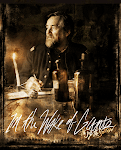 'The Awful Shock and Rage of Battle': Rethinking the Meaning and Consequences of Combat in the American Civil War, Eric T. Dean, Jr., War in History, 8:2 (2001), 149-165.
'The Awful Shock and Rage of Battle': Rethinking the Meaning and Consequences of Combat in the American Civil War, Eric T. Dean, Jr., War in History, 8:2 (2001), 149-165. During the last three decades a new approach to Civil War studies has come to the fore. 'The New Social History' focuses on the social conditions and tensions that were internal to the North and the South. The common person, usually sorted by race/class/gender, are understood as either autonomous agents or autonomous victims who are in conflict with elite agents who were also sorted by race/class/gender. Eric T. Dean brings this perspective to his essay.
The author understands that previous to the last three decades, most agreed with Clausewitz that the war was a continuation of politics by other means. In addition, the Civil War is now additionally viewed as social discourse by other means that lead to self-liberation by women and blacks. If sorting by race/class/gender is being superimposed as a self-serving agenda then scholarship my overlook and marginalized the stark brutality of battle on the soldiers and their families.
 Clausewitz argued that war was not an anomaly but a logical, rational and unavoidable continuation of political controversy by other means. The New Social History tends to view the Civil War as a continuation of society, or social discourse by other means. Origins of the New Social History, Dean explains, lie in the late 19th and early 20th century, a time when society began to be scientifically studies and sociology was organized as a social science. English historians developed methods to study society during the era of the Industrial and French Revolution. Social history focuses on the study of the common individual and particularly peasants, yeoman farmers, urban laborers, and criminals. (pp. 151)
Clausewitz argued that war was not an anomaly but a logical, rational and unavoidable continuation of political controversy by other means. The New Social History tends to view the Civil War as a continuation of society, or social discourse by other means. Origins of the New Social History, Dean explains, lie in the late 19th and early 20th century, a time when society began to be scientifically studies and sociology was organized as a social science. English historians developed methods to study society during the era of the Industrial and French Revolution. Social history focuses on the study of the common individual and particularly peasants, yeoman farmers, urban laborers, and criminals. (pp. 151)Hallmark studies by Ira Berlin, Barbara Fields and Joseph Glatthaar focused on African Americans a pivotal role in the war. This pivotal role includes self-emancipation, autonomy and actively contested the power of the white, male, Christian elite agents of society. In the course of there work the aforementioned authors diminished the agency of Sumner and Lincoln in the movement toward abolition and civil rights. African Americans redesigned their own lives and compelled the elites to act in a certain manner (pp 152).
Reid Mitchell (The Vacant Chair, 1993), merged gender and family studies with soldier studies. The experience of the soldier was shaped by hearth and family. Women were not longer bystanders and men, in and of themselves, were inadequate. " . . . the feminine was critical if not determinative," states Dean of Reid's analysis. Dynamic, formative influences of women at a distance upon men who were coming of age and wrestling with "manly restraint, self discipline and civilized morality." (pp. 153-154)
Image Source: Keith Rocco
Image Source: Clausewitz


No comments:
Post a Comment